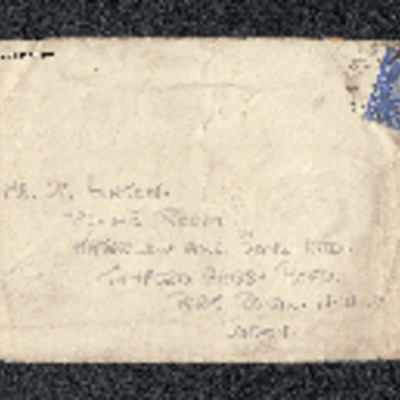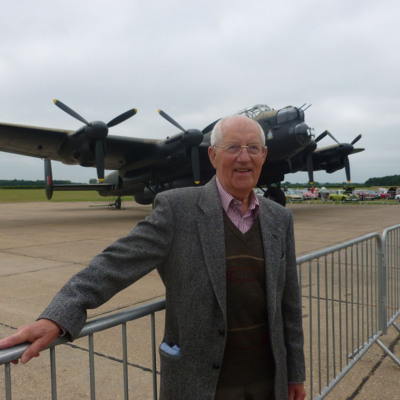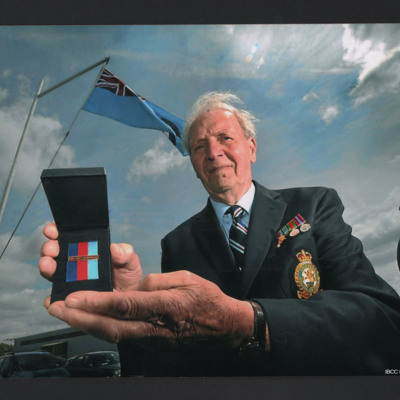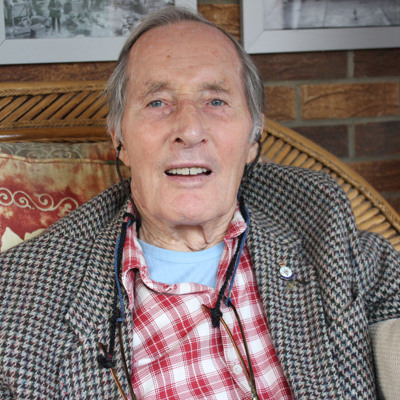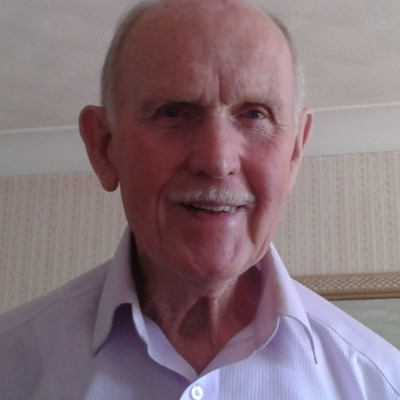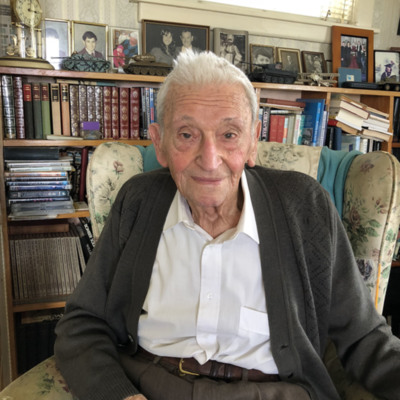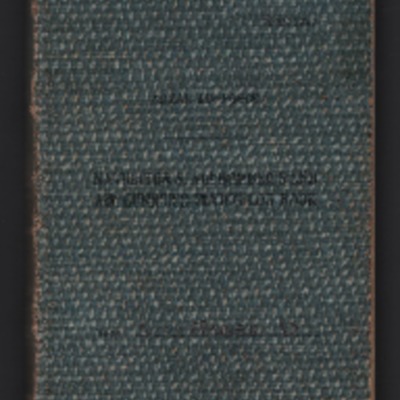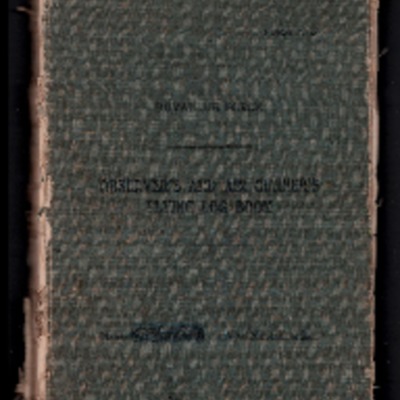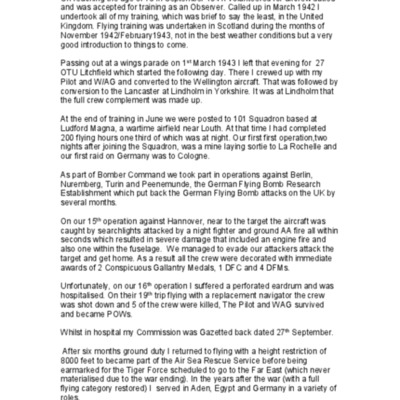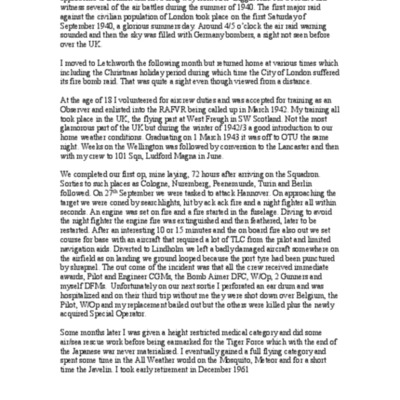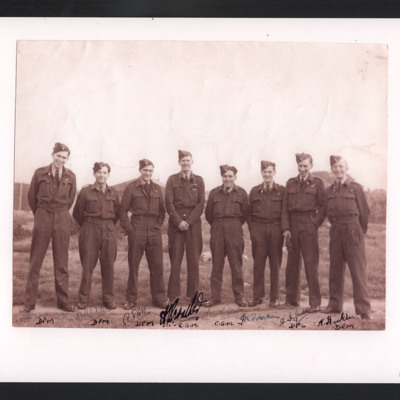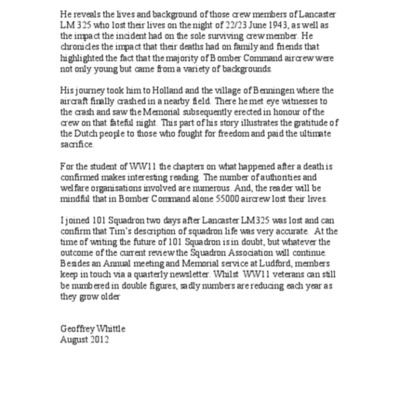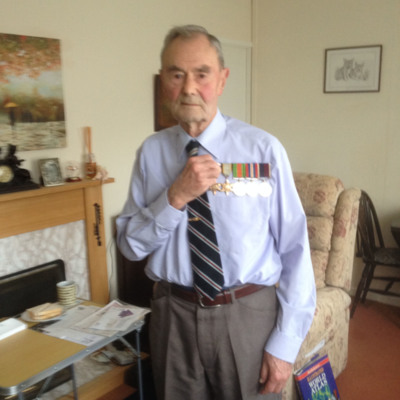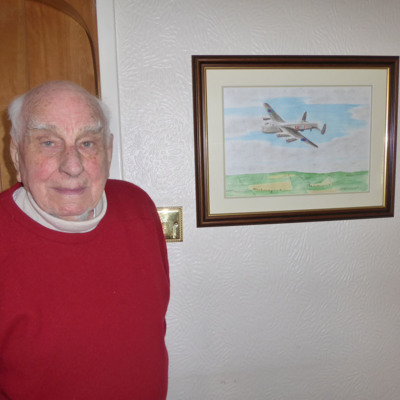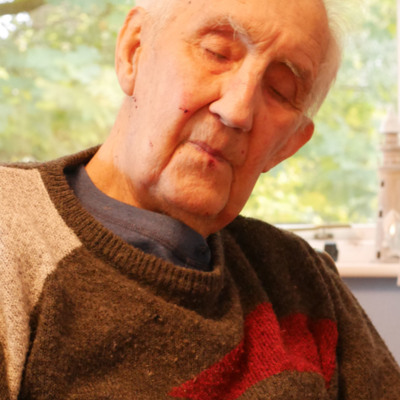Browse Items (155 total)
- Tags: 101 Squadron
Letter from Peter Lamprey to W Gunton
Letter from Peter Lamprey to W Gunton
Letter from Peter Lamprey to W Gunton
Letter from Peter Lamprey to W Gunton
Interview with a navigator from 101 Squadron
Tags: 101 Squadron; air gunner; aircrew; bomb aimer; bombing of Nuremberg (30 / 31 March 1944); briefing; C-47; coping mechanism; flight engineer; Gee; ground crew; ground personnel; lack of moral fibre; Lancaster; mid-air collision; military ethos; navigator; Operational Training Unit; perception of bombing war; pilot; RAF Blyton; RAF Wymeswold; Scarecrow; shot down; superstition; training; Wellington; wireless operator
Interview with John Norrington
Tags: 101 Squadron; aircrew; anti-aircraft fire; bombing; demobilisation; faith; fear; flight engineer; Gibson, Guy Penrose (1918-1944); Halifax; Lancaster; Lancaster Finishing School; military ethos; military living conditions; military service conditions; Pathfinders; RAF Hemswell; RAF Ludford Magna; RAF Sandtoft; RAF St Athan; recruitment; training
Interview with John Ormerod
Tags: 101 Squadron; air gunner; aircrew; bomb aimer; bombing; entertainment; FIDO; flight engineer; ground crew; ground personnel; Halifax; lack of moral fibre; Lancaster; mess; mid-air collision; military living conditions; military service conditions; navigator; pilot; RAF Elsham Wolds; RAF Ludford Magna; RAF St Athan; training; wireless operator; York
Interview with Donald Keith Fraser, One
Interview with Norman Gregory
Tags: 101 Squadron; 28 OTU; aircrew; bale out; bomb aimer; bombing; Bombing of Mailly-le-Camp (3/4 May 1944); Dulag Luft; final resting place; Halifax; Halifax Mk 1; Lancaster; Master Bomber; memorial; Operational Training Unit; prisoner of war; RAF Ansty; RAF Castle Donington; RAF Cosford; RAF Heaton Park; RAF Hemswell; shot down; Stalag 3A; Stalag Luft 7; the long march; Tiger Moth; training; Wellington
Interview with John Joyner
Interview with Thomas Marchant
Tags: 101 Squadron; aircrew; Anson; bombing; bombing of Hamburg (24-31 July 1943); Bombing of Peenemünde (17/18 August 1943); fear; flight engineer; ground crew; Halifax; Lancaster; Lancastrian; Master Bomber; Me 110; military living conditions; military service conditions; Operational Training Unit; Pathfinders; RAF Dishforth; RAF Lossiemouth; RAF Ludford Magna; RAF St Athan; training; V-2; V-weapon
Interview with Ian Petrie
Interview with Sidney Borthwick
WO Donald Keith Fraser
Tags: 1 Group; 101 Squadron; 1667 HCU; aircrew; bomb trolley; bombing; bombing up; briefing; Churchill, Winston (1874-1965); Cook’s tour; dispersal; Distinguished Flying Medal; fear; FIDO; fitter engine; flight engineer; flight mechanic; fuelling; Gee; George VI, King of Great Britain (1895-1952); ground crew; Halifax; Harris, Arthur Travers (1892-1984); Heavy Conversion Unit; Lancaster; memorial; military ethos; military living conditions; military service conditions; navigator; Nissen hut; Operational Training Unit; perception of bombing war; perimeter track; petrol bowser; radar; RAF Bottesford; RAF Catfoss; RAF Coningsby; RAF Cottesmore; RAF East Kirkby; RAF Lindholme; RAF Ludford Magna; RAF North Luffenham; RAF St Athan; RAF Waddington; RAF Wickenby; runway; searchlight; service vehicle; Tiger force; Tirpitz; tractor; training; Window; wireless operator
Donald Fraser's navigator's, air bomber's, air gunner's flying log book
Interview with Donald Fraser. Two
Geoffrey Whittle's observers and air gunners flying log book. One
Tags: 101 Squadron; 1656 HCU; 27 OTU; Air Observers School; aircrew; Anson; bombing; bombing of Hamburg (24-31 July 1943); Bombing of Peenemünde (17/18 August 1943); C-47; Conspicuous Gallantry Medal; Distinguished Flying Cross; Distinguished Flying Medal; Heavy Conversion Unit; Lancaster; Meteor; mine laying; Mosquito; navigator; Operational Training Unit; Proctor; RAF Brize Norton; RAF Halfpenny Green; RAF Hemswell; RAF Leeming; RAF Lichfield; RAF Lindholme; RAF Ludford Magna; RAF Middleton St George; RAF Millom; RAF Paignton; RAF Upavon; RAF West Freugh; training; Walrus; Wellington; York
Sqn. Ldr Geoffrey Whittle, DFM RAF (Ret'd)
Tags: 101 Squadron; 27 OTU; air sea rescue; aircrew; anti-aircraft fire; Bombing of Peenemünde (17/18 August 1943); Conspicuous Gallantry Medal; Distinguished Flying Cross; Distinguished Flying Medal; Lancaster; navigator; Navy, Army and Air Force Institute; Operational Training Unit; pilot; prisoner of war; RAF Lichfield; RAF Lindholme; RAF Ludford Magna; Tiger force; training; V-1; V-weapon; Wellington; wireless operator / air gunner
Sqn Ldr G G Whittle, DFM
Tags: 101 Squadron; aircrew; anti-aircraft fire; bale out; bomb aimer; Conspicuous Gallantry Medal; Distinguished Flying Cross; Distinguished Flying Medal; flight engineer; Lancaster; Operational Training Unit; pilot; RAF Biggin Hill; RAF Lindholme; RAF Ludford Magna; RAF West Freugh; shot down; training; Wellington
Warrant Officer 'Bill' Walker's crew
Jack Osborne
Tags: 101 Squadron; aircrew; crash; Lancaster; memorial; RAF Ludford Magna
Interview with David Kenneth McKenzie Dall
Interview with Ronald Davies
Tags: 10 OTU; 101 Squadron; 28 OTU; aircrew; bomb aimer; bombing; crash; Halifax; Heavy Conversion Unit; Lancaster; Lancaster Finishing School; navigator; Normandy campaign (6 June – 21 August 1944); Operational Training Unit; RAF Ansty; RAF Blyton; RAF Castle Donington; RAF Hemswell; RAF Ludford Magna; RAF Thorney Island; RAF Wymeswold; Stearman; training; V-1; V-weapon; Wellington

![ELampreyPGuntonW[Date]-40.pdf ELampreyPGuntonW[Date]-40.pdf](https://ibccdigitalarchive.lincoln.ac.uk/omeka/files/square_thumbnails/372/6550/ELampreyPGuntonW[Date]-40.jpg)
![ELampreyPGuntonW[Date]-410001.jpg ELampreyPGuntonW[Date]-410001.jpg](https://ibccdigitalarchive.lincoln.ac.uk/omeka/files/square_thumbnails/372/6551/ELampreyPGuntonW[Date]-410001.jpg)
![ELampreyPGuntonW[Date]-42.pdf ELampreyPGuntonW[Date]-42.pdf](https://ibccdigitalarchive.lincoln.ac.uk/omeka/files/square_thumbnails/372/6552/ELampreyPGuntonW[Date]-42.jpg)
